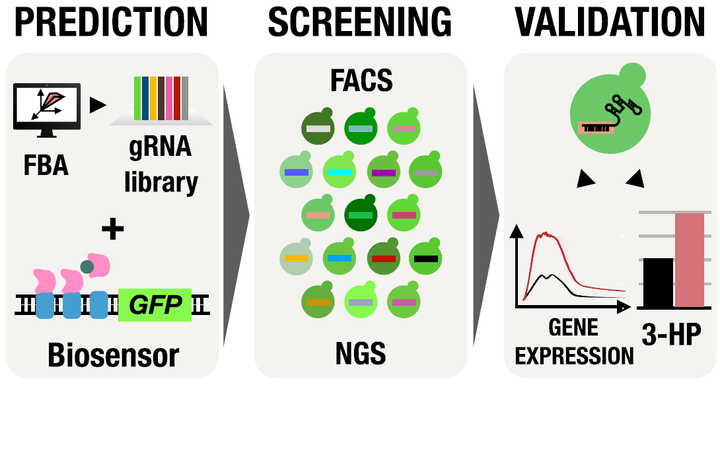Model-Assisted Fine-Tuning of Central Carbon Metabolism in Yeast through dCas9-Based Regulation
 Overview of the work done in this study. Taken from the original publication: https://www.doi.org/10.1021/acssynbio.9b00258
Overview of the work done in this study. Taken from the original publication: https://www.doi.org/10.1021/acssynbio.9b00258Abstract
In metabolic engineering (the practice of optimizing cellular metabolism to increase production of a certain compound), a fundamental step is to decide which genetic targets to focus on. Traditionally, this is done using previous knowledge and by manually inspecting metabolic pathways. In this study, we instead decided on the candidates by combining high-throughput computational and experimental practices. An initial group of 168 targets for increased acetyl-CoA & malonyl-CoA production was selected using genome-scale modeling. Based on this, a gRNA library of different intensity promoters was constructed; this library shared an intra-cellular malonyl-CoA responsive biosensor, so that the best candidates could be later chosen using cell sorting based on fluorescence. Finally, these best candidates were evaluated in regards to their efficiency to produce 3-hydroxypropionic acid (a compound derived from malonyl-CoA). I was in charge of the genome-scale modeling step of the approach, using a variation of a method called flux scanning based on enforced objective flux (FSEOF). Even though the final results were not very positive, this paper sets a new approach for designing strains for metabolic engineering, that I hope continues to get further optimized.